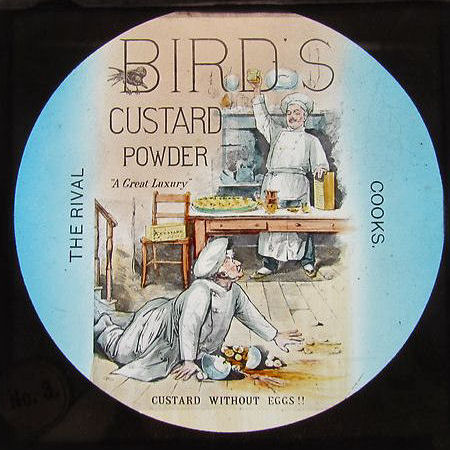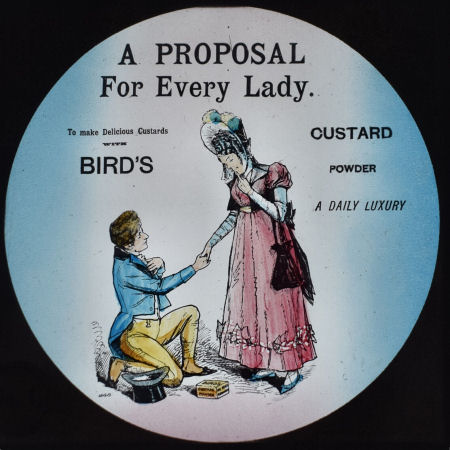|
|
Slides for advertising |
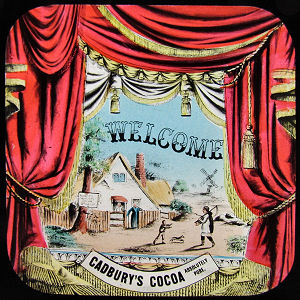 |
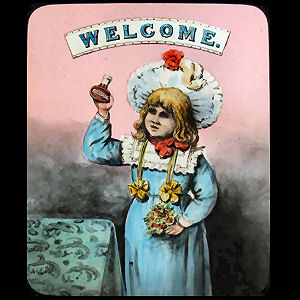 |
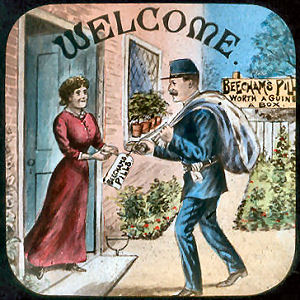 |
|
Three advertising Welcome
slides. These 'motto slides' were often used by the lanternist at the opening of
his magic lantern show. The slides above are respectively advertising Cadbury's Cocoa
(Absolute Pure), Bovril (a thick, salty beef extract) and Beechams Pills (Worth a Guine a box).
|
||
|
Advertising slides were common in the 1870s. In 1876 The
Globe reported that traffic in the Strand in London had been brought to a
standstill by 'a gratuitous exhibition of dissolving views .... [giving] advice
as to the best sewing machine, the cheapest hatter, where to dine, and the most
popular newsagent.' Special clockwork street lanterns were designed for
projecting a series of slides in succession. In 1889 the Optical Magic Lantern Journal reported that most principal railway stations were showing lantern advertisements. The slides were changing automatically every 30 seconds, day and night. The clockwork mechanism needed to be wound up by railway staff once a week. A patent was applied for an 'optical apparatus fitted to road vehicles for throwing images on a screen for advertising purpose', but is is not certain that the device was actually applied. Advertising slides were often loaned or given away to lanternists free of charge from a wide variety of companies. After all those slides were one of the most effective ways of conveying their advertising message to a wide audience in those days. Some products that were regularly advertised were Bird's Custard Powder, Fry's chocolate and cocoa, Peak Frean biscuits, Dr Ridge's Baby Food, Elliman's liniment and Pears' soap. Besides manufacturers of commercial products like soap and porridge also political parties used the medium to promote their 'products', their political ideas. Social organisations like the temperance movement used the magic lantern to cover a wide range of subjects including abuse of alcohol, gambling, child poverty and advices concerning health and safety. Slides were also used to convey the Christian message to the natives of various counties far away but also for missionary work at home. The Salvation Army and in Britain the Band of Hope were some of the largest organisations that often made use of the magic lantern, but there were also many local groups and individual itinerant preachers touring a circuit to spread the 'Good News'. |
||
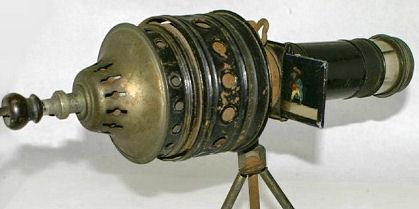 |
Street lantern. Because of
its very long focal distance this model magic lantern was suitable to project
an advertising slide on a blind wall across the street. |

|
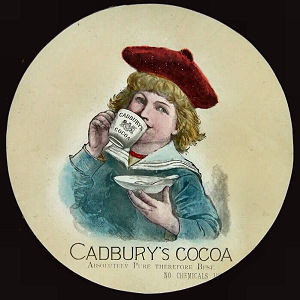 |
Seven slides advertising Cadbury's Cocoa. In 1824, John Cadbury (1801-1889) started selling tea on Bull Street in Birmingham (United Kingdom). He soon sold cocoa and drinking chocolate, which he prepared himself. The first slide was made by Wilkinson & Co., Artists and Opticians, Sunderland. |
|
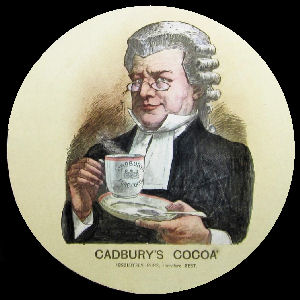 |
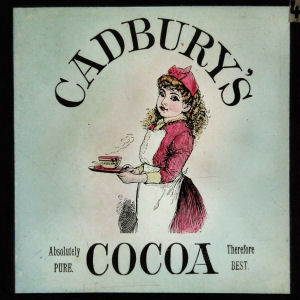 |
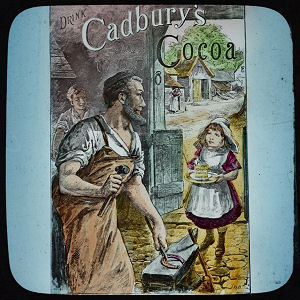 |
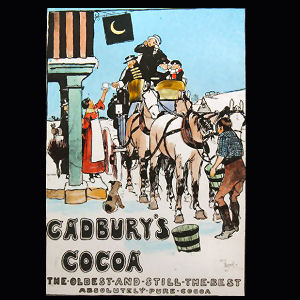 |
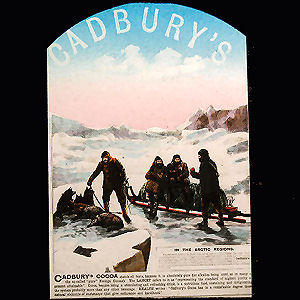 |
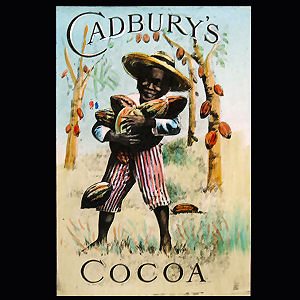 |
..... and three slides from the competition. Fry's cocoa. |
||
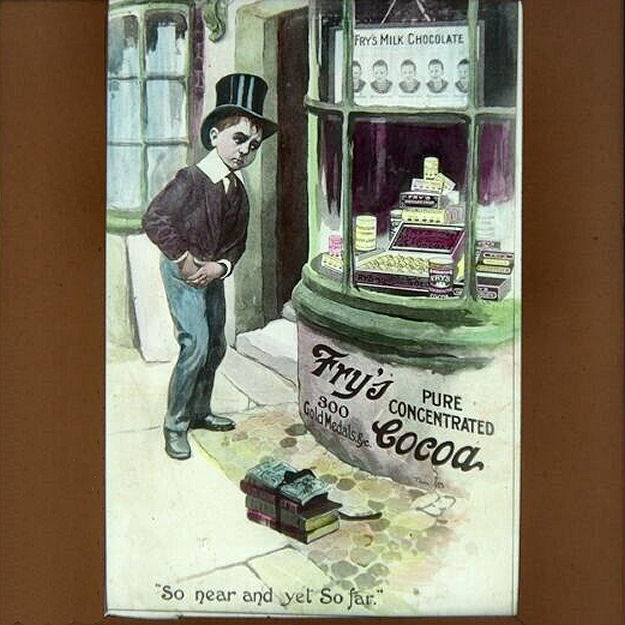 |
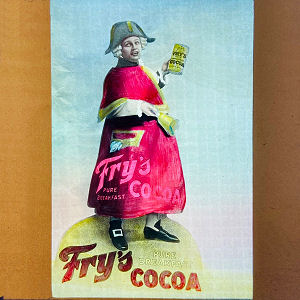 |
|
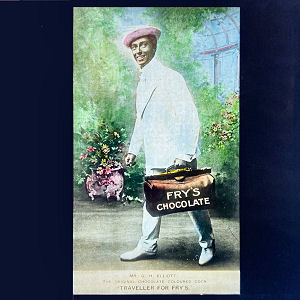 |
||
|
Five slides with cheerful advertisements for Bird's Custard Powder. |
||
|
||
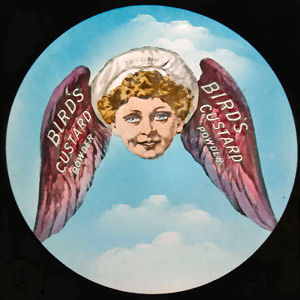 |
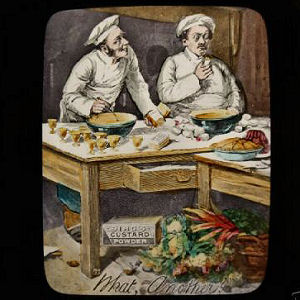 |
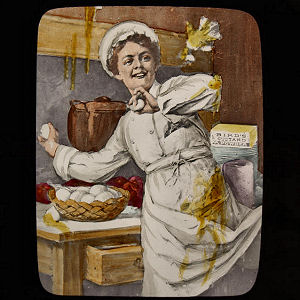 |
Three slides advertising for Peek Frean Biscuits. |
||
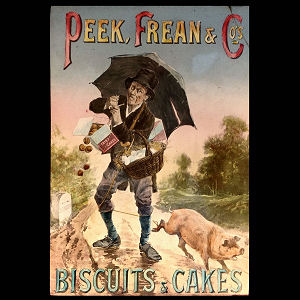 |
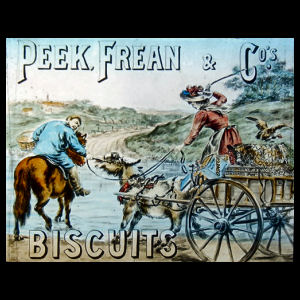 |
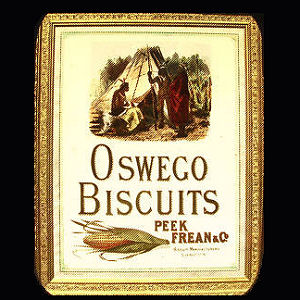 |
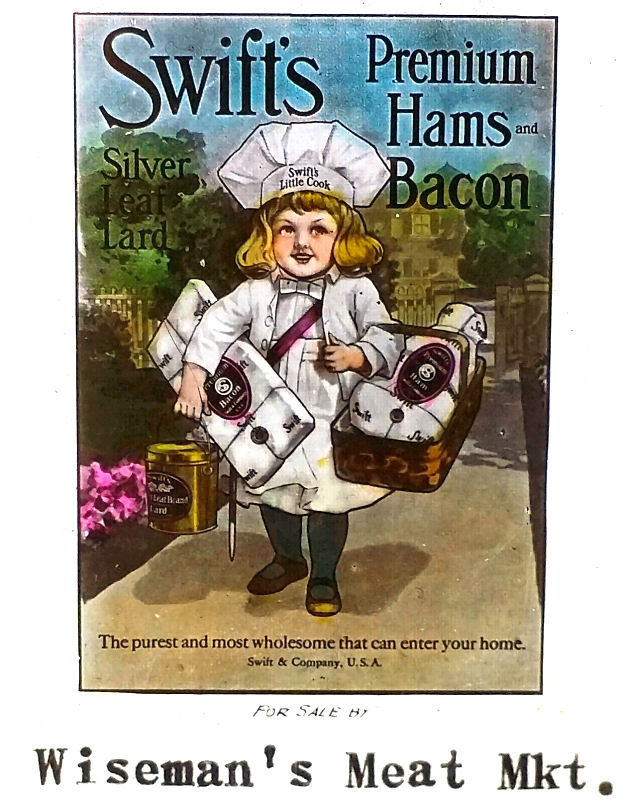 |
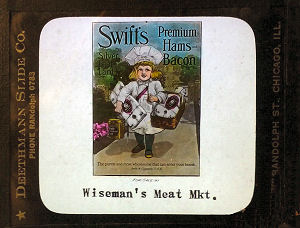 American sized magic lantern slide, 3,25 x 4 inches or ca 8 x 10 cm advertising Swift's Premium Hams and Bacon, for sale in Wiseman's Meat Mkt., ca1930. 'The purest and most wholesome that can enter your home.' Produced by Deethmann Slide Co., U.S.A. |
|
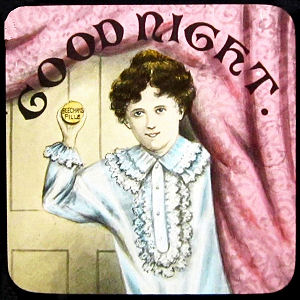 |
||
| Beecham's Pills wishes you a good night. | ||
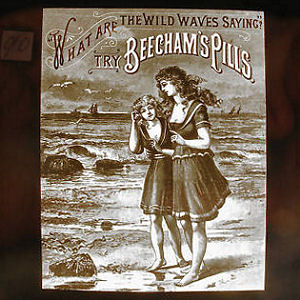 |
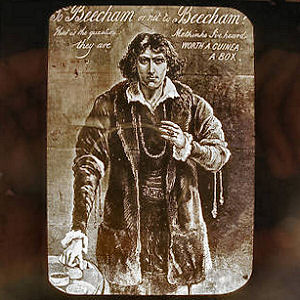 |
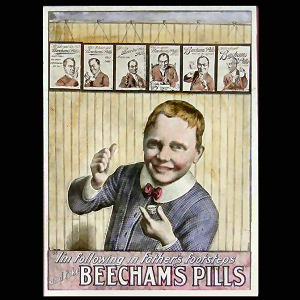 |
| Three slides advertising for Beecham Pills. What are the Wild Waves saying, a Hamlet parody, and 'I'm following my father's steps'. | ||
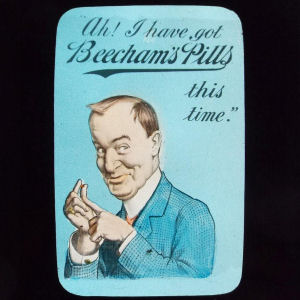 |
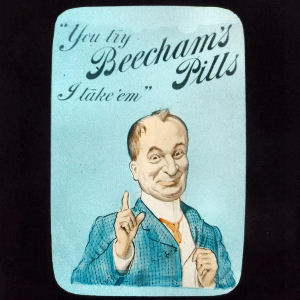 |
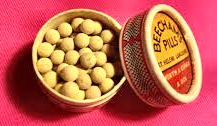 Beecham's Pills were a laxative first marketed about 1842. They were invented by Thomas Beecham, grandfather of the conductor. They were initially advertised like other patent medicine as a cure-all, but they actually did have a positive effect on the digestive process. |
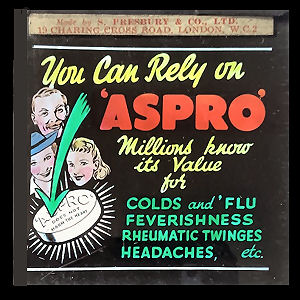 |
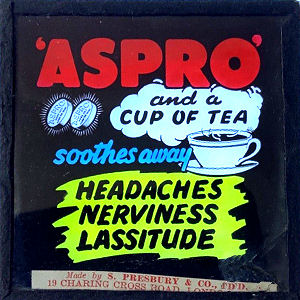 |
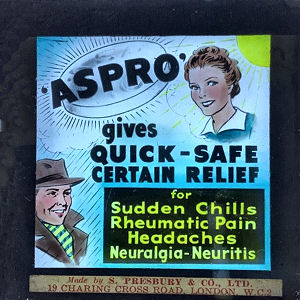 |
|
Three advertisements for Aspro, a pill
against colds, flu, headaches and more. Made by Presbury & Co. Ltd in London. |
||
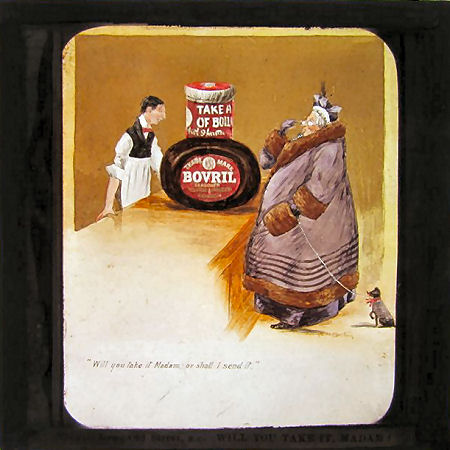 |
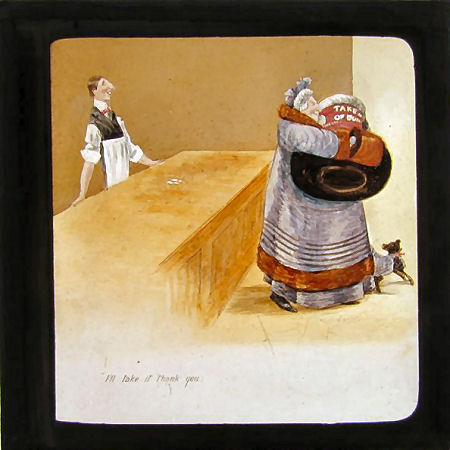 |
| Two
advertisements for Bovril. The first one has a caption on glass: 'Will you take
it madam or shall I send it ?'. There is a label at the bottom of the slide that
says: BOVRIL LTD OLD STREET E.C WILL YOU TAKE IT MADAM ? The second slide has a caption on glass: 'I'll take it. Thank you'. Both slides are 8.2 x 8.2 cm. |
|
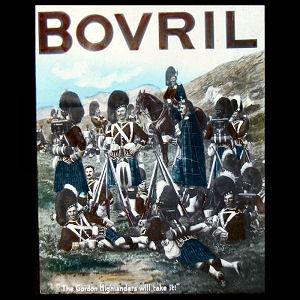 |
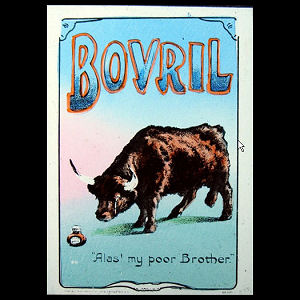 |
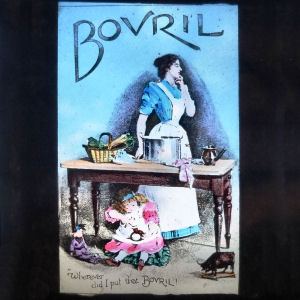 |
| Three
advertisements for the Beef extract Bovril ('The Gordon Highlanders will take
it', 'Alas, my poor Brother', and 'Wherever did I put that Bovril!). |
||
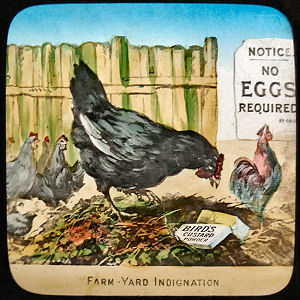 |
Again two
nice
advertisements for Bird's Custard Powder. Arm-yard indignation (No Eggs Required) and an unrivalled egg powder. |
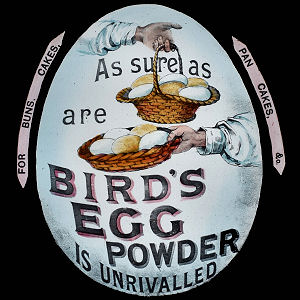 |
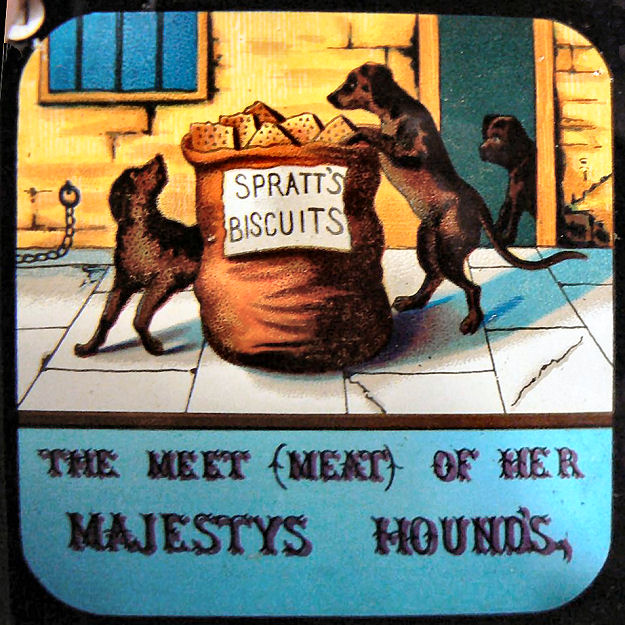 |
This slide looks like an advertising slide for the dog biscuits made by Spratt's,
but it is not. This is slide #11 from a funny series of slides made by Theobald
& Co, England, 'The Fine Art Gallery', which is a
comic skit on some celebrated paintings etc. The meet (meat) of her
Majesty's Hounds. Mind the pun. Spratt's was the world's first large-scale manufacturer of dog biscuits. Its "Meat Fibrine Dog Cake" was the brainchild of American entrepreneur James Spratt who launched the biscuit in London circa 1860. |
|
|
Quaker Oats A Perfect Food For Young And Old |
|
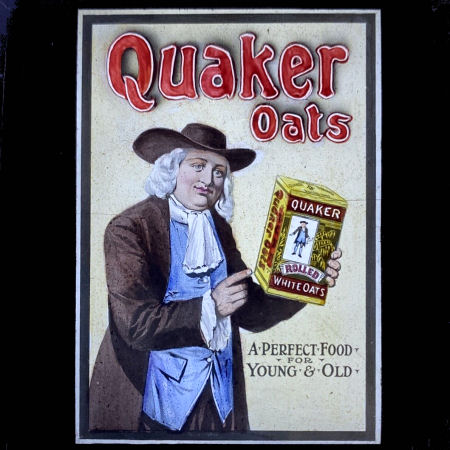 |
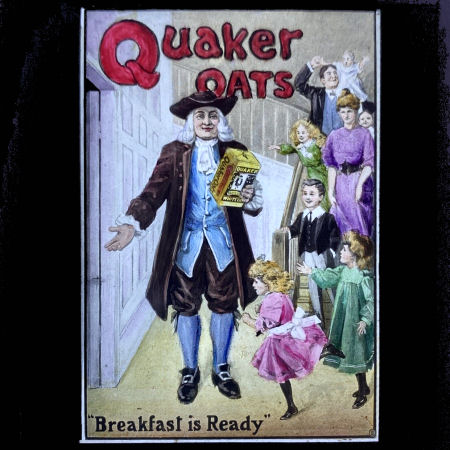 |
| Introduction Frolie
Grasshopper Circus. The manufacturer of porridge Quaker Oats shows in seven slides a variety of tricks of the 'Grasshopper Circus'. One of the firms that employed a 'story technique' to promote their products. |
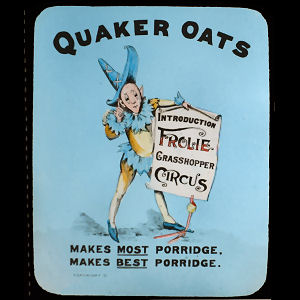 |
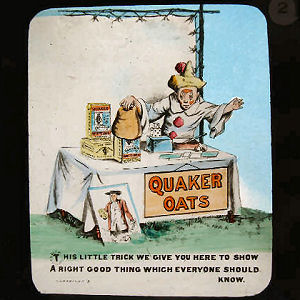 |
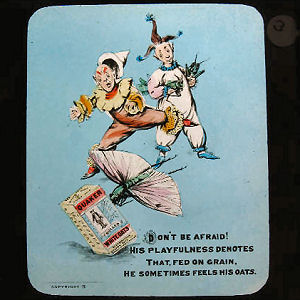 |
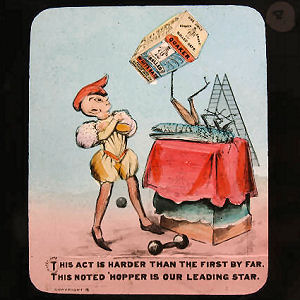 |
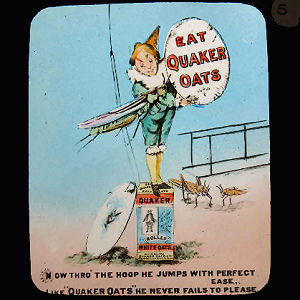 |
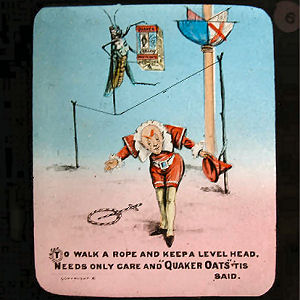 |
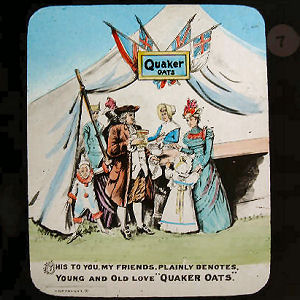 |
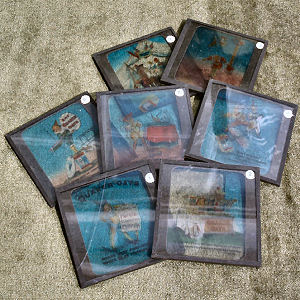 |
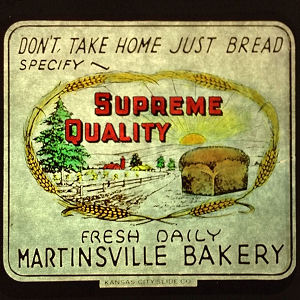 |
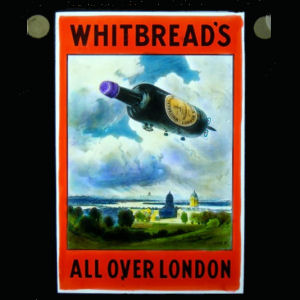 |
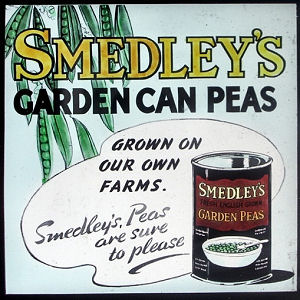 |
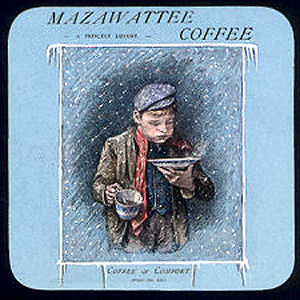 |
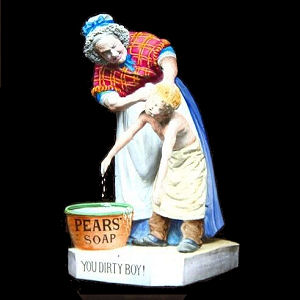 |
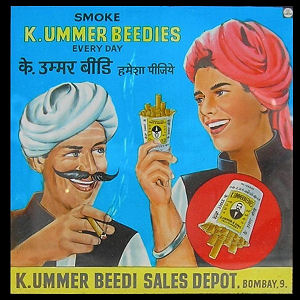 |
|
Advertisements for the supreme bread baked by Martinsville Bakery,
Whitbread's beer, Smedley's garden peas en meer. |
||
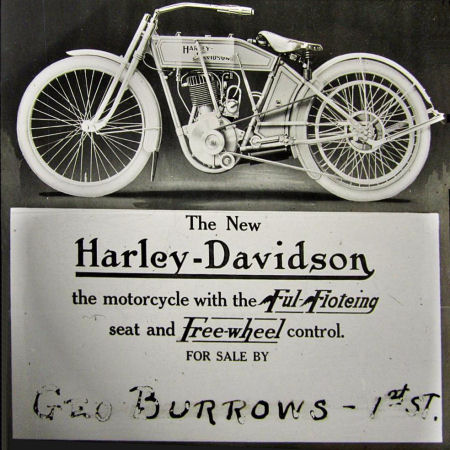 |
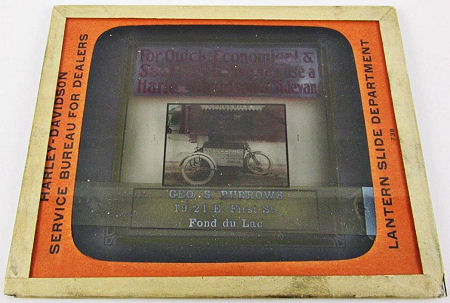 Some advertisement slides for the Harley-Davidson motorcycle, for sale by Geo S. Burrows, Fond du Lac, a city in Wisconsin, United States. The name is French for Bottom of the Lake. Slides have the American format, 3.25"x 4" or 8.2 x 10 cm. |
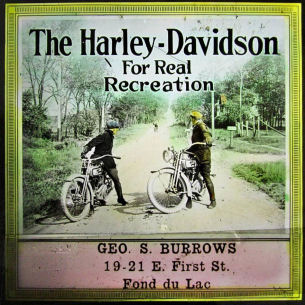 |
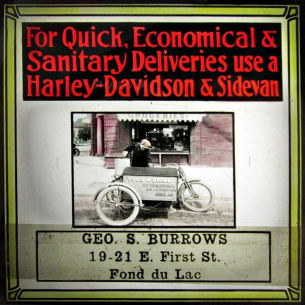 |
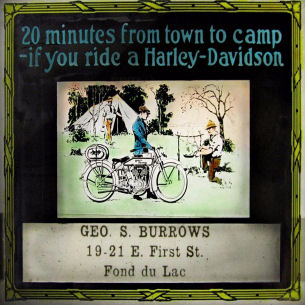 |
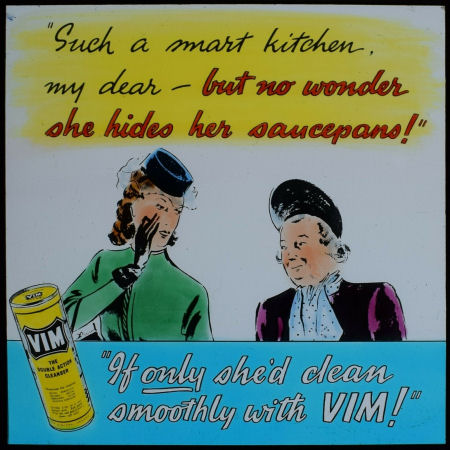 |
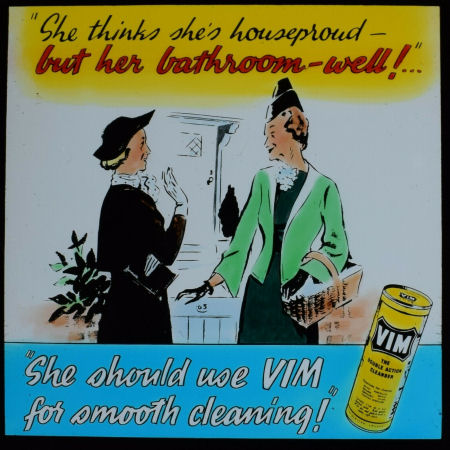 |
|
Two gossip
women advertising VIM on these slides. |
|
| Two Good Night motto slide
announce the end of our commercial magic lantern show. They advertise Bovril and
Cadburry Cocoa again. |
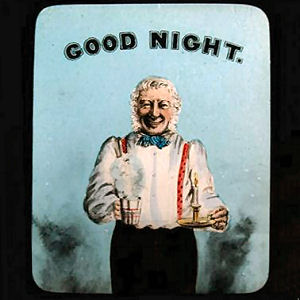 |
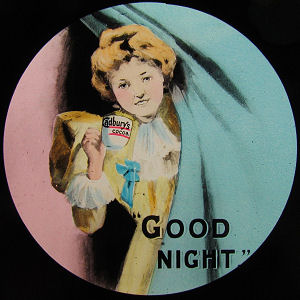 |
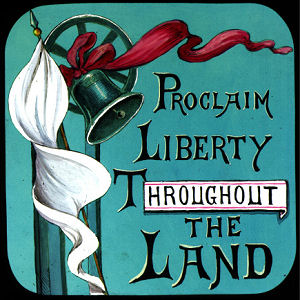 |
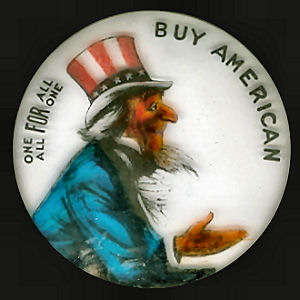 |
Two advertising slides
carrying a political message: Proclaim Liberty throughout the Land, and Buy American
(One for All, All for One). |
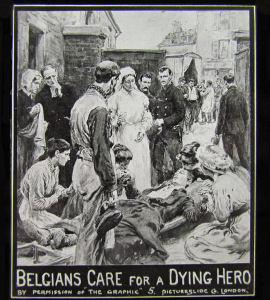 |
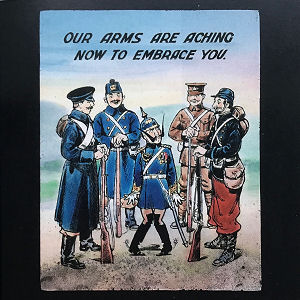 |
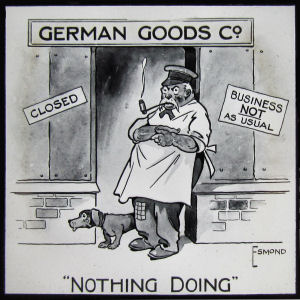 |
| Wartime propaganda. During the First and Second World Wars, the magic lantern slide contributed to the process of keeping morale high, reassuring citizens and contributing to a feeling of superiority over the enemy. These are three slides from WWI. | ||
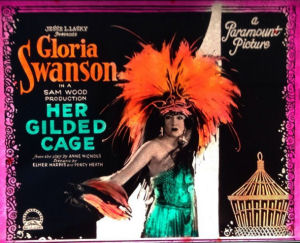 |
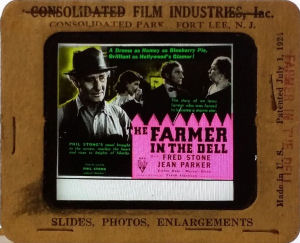 |
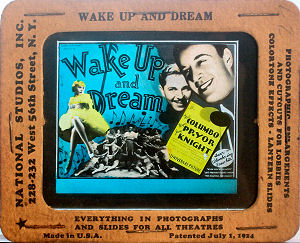 |
| Cinema theatres commonly used advertising lantern slides to promote upcoming films. These colourful 3.25"x 4" slides were widely used in theatres into the 1930. Probably because of the temporary use of the slides they were usually mounted in a simple cardboard frame. The theatres also used their lanterns to project all kind of messages, like 'Ladies, kindly remove your hats.' (magic lantern etiquette) | ||
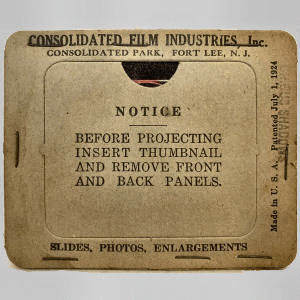 |
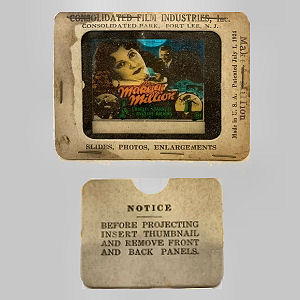 |
These pictures show how the promotional slides were
distributed by the film distributors. The advertisement was sandwiched
between two cardboard rectangles that formed the packaging material and the
frame of the lantern slide at the same time. Two panels that were punched in front and behind
of the cardboard, had to be broken
out carefully, after which the promotional slide could be projected directly. A very smart way of sending. |
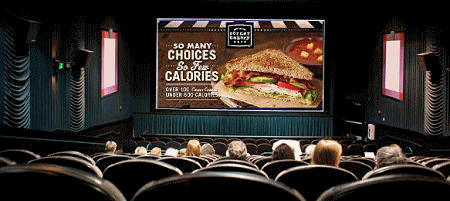 |
Advertising slides are still in use nowadays in cinema advertising to promote the products of local traders in the pause. |
| |
©1997-2025 'de Luikerwaal' All rights reserved. Last update: 08-03-2025. |
